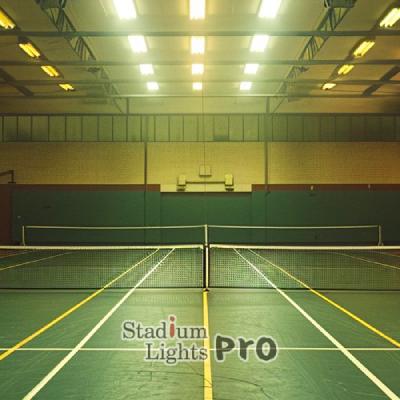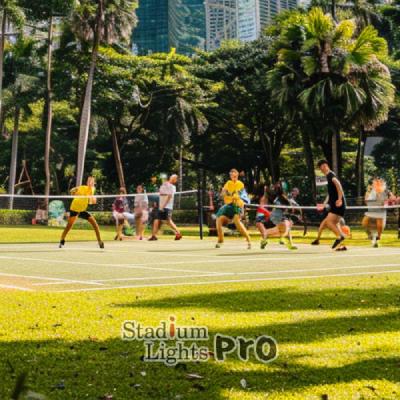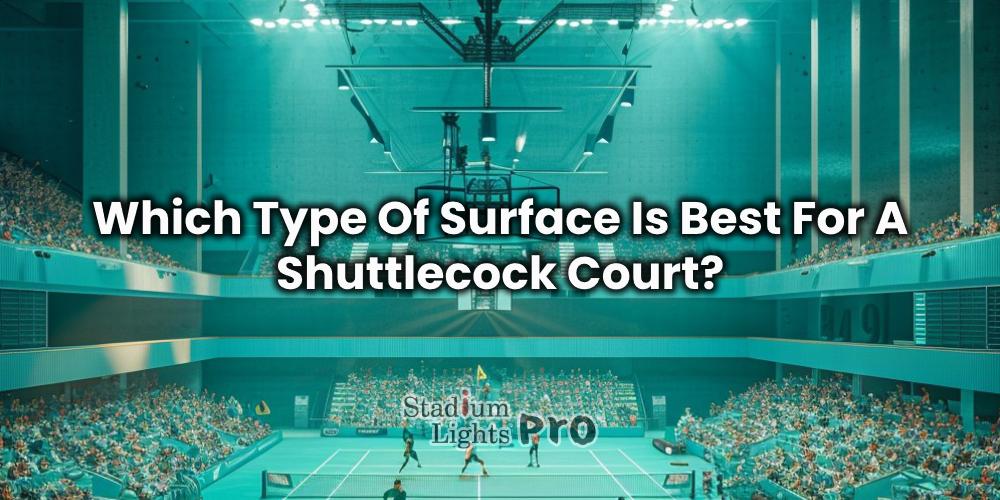Table of Contents
ToggleExplanation of the importance of surface selection for shuttlecock courts
The surface of a shuttlecock court plays a pivotal role in determining the quality of play and overall experience for players. Whether for recreational enjoyment or professional competition, the choice of surface significantly influences factors such as ball bounce, player movement, and injury prevention. A well-selected surface can enhance gameplay by providing consistent ball response and optimal traction, while a poorly chosen surface may lead to uneven playability and increased risk of injuries. Thus, the importance of carefully selecting the right surface cannot be overstated in ensuring a safe and enjoyable environment for shuttlecock enthusiasts of all levels.
Overview of factors to consider when choosing the surface type
Several factors come into play when deciding on the most suitable surface type for a shuttlecock court. These include the intended level of play, climate conditions, budget constraints, and maintenance requirements. Additionally, factors such as surface texture, grip, and shock absorption are critical considerations that directly impact player performance and safety. By carefully evaluating these factors and understanding their implications, individuals can make informed decisions regarding surface selection to create an optimal playing environment tailored to their specific needs and preferences.
Hard Surface Options
Asphalt
 Asphalt surfaces are durable and provide good traction for players. They are relatively inexpensive to install compared to other hard surfaces, making them a cost-effective option for shuttlecock courts. Asphalt courts are also resistant to weather elements such as rain and sunlight, making them suitable for outdoor use.
Asphalt surfaces are durable and provide good traction for players. They are relatively inexpensive to install compared to other hard surfaces, making them a cost-effective option for shuttlecock courts. Asphalt courts are also resistant to weather elements such as rain and sunlight, making them suitable for outdoor use.
Despite their durability, asphalt surfaces may develop cracks over time, especially in regions with extreme temperature variations. These cracks can affect ball bounce and player movement, potentially compromising the quality of play. Additionally, asphalt surfaces require regular maintenance to repair cracks and maintain smoothness, adding to the long-term upkeep costs.
Concrete
Concrete surfaces offer excellent durability and stability, making them suitable for heavy usage and high-impact sports like badminton. They provide a consistent playing surface with predictable ball bounce, contributing to a fair and enjoyable gaming experience. Concrete courts are also relatively low-maintenance and resistant to weathering, ensuring long-term performance.
While concrete surfaces are durable, they can be hard on players’ joints and may increase the risk of injuries, especially with frequent or intense gameplay. The hardness of concrete can also result in faster player fatigue compared to other softer surfaces. Additionally, concrete courts may require surface treatments or coatings to enhance traction and reduce glare, adding to the initial installation cost.
Composite Surfaces
Composite surfaces combine materials like acrylic or polyurethane with asphalt or concrete bases to create a durable and versatile playing surface. These surfaces offer excellent shock absorption and traction, providing a balance between player comfort and performance. Composite surfaces can be customized to meet specific playing preferences and are suitable for both indoor and outdoor use.
While composite surfaces offer many benefits, they tend to be more expensive upfront compared to traditional asphalt or concrete courts. Additionally, composite surfaces may require specialized installation and maintenance procedures to ensure optimal performance and longevity. Regular cleaning and occasional resealing may be necessary to preserve the surface quality and appearance over time.
Soft Surface Options
Artificial Grass
 Artificial grass surfaces provide a natural look and feel while offering consistent playing conditions. They offer good shock absorption, reducing the risk of injuries during gameplay. Besides, artificial grass courts require minimal maintenance compared to natural grass, as they do not need mowing, watering, or fertilizing.
Artificial grass surfaces provide a natural look and feel while offering consistent playing conditions. They offer good shock absorption, reducing the risk of injuries during gameplay. Besides, artificial grass courts require minimal maintenance compared to natural grass, as they do not need mowing, watering, or fertilizing.
Despite their benefits, artificial grass surfaces can be susceptible to wear and tear, especially in high-traffic areas. Over time, the fibers may flatten, affecting ball bounce and player traction. Additionally, artificial grass courts may heat up in hot weather, potentially making them uncomfortable for players. Proper drainage is also essential to prevent water buildup and maintain surface integrity.
Acrylic Surfaces
Acrylic surfaces, also known as hard-court surfaces, offer excellent durability and consistent playing conditions. They provide good traction and ball response, making them suitable for competitive play. Acrylic surfaces come in various colors and can be customized to meet specific design preferences.
While acrylic surfaces are durable, they can be hard on players’ joints, especially during prolonged play. Additionally, acrylic courts may require regular maintenance, including cleaning and reapplication of surface coatings, to preserve their performance and appearance. Acrylic surfaces may also be prone to cracking or blistering if not properly installed or maintained.
Wooden Flooring
Wooden flooring surfaces offer a classic and elegant look while providing excellent shock absorption and traction. They offer a natural feel underfoot and can enhance the overall aesthetic of a shuttlecock court. Wooden floors are suitable for both indoor and outdoor use and can be customized in terms of finish and color.
Despite their benefits, wooden flooring surfaces may require periodic maintenance, including sanding and refinishing, to repair scratches and maintain surface smoothness. Wooden floors are also susceptible to damage from moisture and humidity, requiring proper sealing and ventilation to prevent warping or rotting. Additionally, wooden surfaces may be more expensive to install compared to other soft surface options.
Considerations for Specific Playing Styles
Singles Play
For singles play, players often prioritize speed and agility, requiring a surface with good traction and responsiveness. A surface that allows for quick directional changes and precise footwork is essential. Additionally, singles players may prefer a surface with medium to high bounce to facilitate aggressive shots and fast-paced rallies.
Doubles Play
Doubles play typically involves more lateral movement and strategic positioning compared to singles. Therefore, a surface that offers excellent lateral stability and support is crucial for doubles players. Additionally, doubles players may prefer a surface with slightly lower bounce to accommodate quick reflexes and rapid exchanges at the net.
Recreational vs. Professional
The surface needs for recreational and professional players may vary based on factors such as skill level, frequency of play, and budget constraints. Recreational players may prioritize affordability and ease of maintenance, opting for surfaces that offer decent playability without requiring extensive upkeep. In contrast, professional players require surfaces that meet specific performance standards, including consistent ball bounce, traction, and shock absorption. Professional-grade surfaces may involve higher upfront costs and more stringent maintenance requirements to ensure optimal playing conditions for competitive play.
Maintenance and Longevity
In considering the installation of soft surface shuttlecock courts, attention must also be given to maintenance and longevity factors.
Maintenance Requirements for Each Surface Type
Different surface types, such as artificial grass and wooden flooring, entail distinct maintenance needs. For artificial grass, regular grooming, infill replenishment, and occasional cleaning are necessary to uphold its playability and aesthetics. Conversely, wooden flooring demands periodic sealing, refinishing, and protection from moisture to prevent warping or degradation over time.
Longevity and Durability Considerations
The longevity and durability of soft surface courts depend on various factors, including the quality of materials used, the frequency of use, and adherence to maintenance protocols. Artificial grass, when well-maintained, can endure heavy foot traffic and inclement weather conditions for several years. Similarly, properly installed and maintained wooden flooring can withstand wear and tear, providing a durable playing surface for an extended period.
Cost-Effectiveness Over Time
Assessing the cost-effectiveness of soft surface courts involves considering both initial investment and ongoing maintenance expenses relative to the projected lifespan of the installation. While the upfront cost of installation may vary depending on the chosen surface type and site preparation requirements, factoring in long-term maintenance costs and anticipated lifespan can help determine the overall cost-effectiveness of the investment. Additionally, factors such as durability and performance consistency over time contribute to the economic viability of soft surface courts for shuttlecock play.
Conclusion
Choosing the right surface for shuttlecock courts is critical and involves understanding the benefits and considerations of options like artificial grass and wooden flooring. Recommendations should be based on specific needs, such as prioritizing durability or aesthetics. Factors like budget, climate, and maintenance should be carefully weighed, and seeking expert advice can help make an informed decision. By summarizing key points, offering tailored recommendations, and considering final factors, individuals and organizations can confidently choose the best surface for optimal performance and enjoyment.

